Pastilla: Make This Traditional Moroccan Sweet in 4 Steps
Pastilla is Morocco’s most celebrated sweet and savory pastry, featuring tender spiced chicken wrapped in delicate phyllo dough and dusted with powdered sugar and cinnamon. This iconic Moroccan dish combines contrasting flavors that create an unforgettable culinary experience, perfect for special occasions and family gatherings.
Overview of Moroccan Cuisine
Moroccan cuisine represents one of the world’s most sophisticated culinary traditions, blending Berber, Arab, Mediterranean, and French influences. The country’s strategic location at the crossroads of Africa and Europe has created a unique gastronomy that balances sweet and savory flavors, aromatic spices, and diverse cooking techniques.
Traditional Moroccan cooking emphasizes the use of preserved lemons, olives, saffron, and complex spice blends like ras el hanout. The cuisine is characterized by slow-cooking methods, communal dining traditions, and dishes that tell stories of Morocco’s rich cultural heritage.
Best Time to Cook This Dish
Pastilla shines brightest during special celebrations and festive occasions. This elaborate dish is traditionally prepared for:
Religious Holidays: Eid al-Fitr and Eid al-Adha celebrations often feature chicken pastilla as a centerpiece dish that brings families together.
Wedding Ceremonies: Moroccan bastilla frequently appears at wedding banquets, symbolizing prosperity and good fortune for the newlyweds.
Winter Months: The warming spices and hearty nature of pastilla make it perfect for cooler weather, typically from November through March.
Weekend Gatherings: Due to its time-intensive preparation, pastilla works best when you have several hours available for cooking and assembly.
Cultural Significance of Pastilla
The history of pastilla reflects Morocco’s cultural complexity and culinary evolution. Originally created in the imperial city of Fez, this bastilla moroccan represents the pinnacle of Moroccan pastry artistry. The dish traditionally used pigeon meat, reflecting its aristocratic origins, though modern versions commonly feature chicken.
Pastilla embodies the Moroccan philosophy of balancing opposing flavors—sweet cinnamon and sugar contrast with savory spiced meat, while delicate phyllo pastry provides textural contrast. The circular shape symbolizes unity and completeness, making it particularly meaningful for celebrations and family gatherings.
The preparation of moroccan pastilla often becomes a communal activity, with multiple generations working together to create the perfect layers of pastry and filling. This collaborative cooking process strengthens family bonds and passes down culinary traditions.
Ingredients Needed

For the Chicken Filling:
- 1 whole chicken (3-4 pounds), cut into pieces
- 2 large onions, finely chopped
- 3 cloves garlic, minced
- 1 bunch fresh cilantro, chopped
- 1 bunch fresh parsley, chopped
- 1 teaspoon ground ginger
- 1 teaspoon ground cinnamon
- ½ teaspoon ground turmeric
- ½ teaspoon saffron threads
- Salt and black pepper to taste
- 3 tablespoons olive oil
- 2 cups chicken broth
For the Egg Layer:
- 8 large eggs
- ½ teaspoon salt
- 2 tablespoons butter
For the Almond Mixture:
- 2 cups blanched almonds
- ½ cup powdered sugar
- 1 teaspoon ground cinnamon
- 2 tablespoons orange blossom water
For Assembly:
- 12-15 sheets phyllo pastry (warqa or brick pastry)
- ½ cup melted butter
- 2 tablespoons powdered sugar
- 1 teaspoon ground cinnamon
Ingredient Substitutions for International Cooks:
- Orange blossom water: Replace with rose water or vanilla extract
- Saffron: Use turmeric for color (though flavor will differ)
- Phyllo pastry: Available in most international grocery stores
Step-by-Step Instructions
Preparing the Chicken Filling
- Season and sear the chicken: Pat chicken pieces dry and season with salt and pepper. Heat olive oil in a large pot over medium-high heat. Brown chicken pieces on all sides, about 8-10 minutes total.
- Add aromatics: Add chopped onions and garlic to the pot. Cook until onions become translucent, approximately 5 minutes.
- Add spices and herbs: Stir in ginger, cinnamon, turmeric, and saffron. Add half of the chopped cilantro and parsley. Cook for 2 minutes until fragrant.
- Braise the chicken: Pour in chicken broth, bring to a boil, then reduce heat to low. Cover and simmer for 45-60 minutes until chicken is tender and easily shredded.
- Shred and reduce: Remove chicken, let cool, then shred into bite-sized pieces. Continue cooking the sauce uncovered until it reduces to about 1 cup of concentrated liquid.
Preparing the Egg Layer
- Cook the eggs: Beat eggs with salt in a bowl. Melt butter in a large non-stick pan over low heat. Pour in beaten eggs and scramble gently until just set but still creamy. Set aside to cool.
Preparing the Almond Mixture
- Process almonds: Pulse blanched almonds in a food processor until roughly chopped (not powdered). Mix with powdered sugar, cinnamon, and orange blossom water.
Assembly Process
- Prepare your workspace: Preheat oven to 400°F (200°C). Line a 12-inch round baking dish or tart pan with parchment paper.
- Layer the bottom: Brush one phyllo sheet with melted butter and place in the pan. Repeat with 6-7 sheets, arranging them to cover the bottom and sides with some overhang.
- Add the almond layer: Spread the prepared almond mixture evenly over the phyllo base.
- Add chicken filling: Distribute the shredded chicken evenly over the almonds, then pour the reduced cooking liquid over the meat.
- Add egg layer: Spread the scrambled eggs over the chicken filling.
- Top with remaining phyllo: Cover with remaining phyllo sheets, brushing each with butter. Fold overhanging edges over the top to create a sealed package.
- Final butter coating: Brush the top generously with remaining melted butter.
Baking
- Bake the pastilla: Place in preheated oven for 25-30 minutes until golden brown and crispy.
- Cool and garnish: Let cool for 10 minutes. Dust with powdered sugar and cinnamon in decorative patterns.
Cooking Tips & Tricks
Phyllo Pastry Handling: Keep unused phyllo sheets covered with a damp towel to prevent drying out. Work quickly but gently to avoid tearing.
Moisture Control: Ensure your chicken filling isn’t too wet, as excess moisture will make the pastry soggy. Reduce the cooking liquid thoroughly.
Make-Ahead Strategy: Prepare all components separately the day before. Assemble and bake on the day of serving for best results.
Authentic Flavor Enhancement: Toast whole spices before grinding for deeper flavor. Use high-quality saffron soaked in warm water for maximum impact.
Texture Perfection: For extra crispiness, brush the assembled pastilla with beaten egg before the final butter coating.
Temperature Management: Serve warm rather than hot to allow flavors to meld and prevent burns from the sugar topping.
Serving Suggestions
Pastilla works beautifully as both an appetizer and main course. For traditional Moroccan presentation, serve alongside:
Traditional Accompaniments: Mint tea provides the perfect palate cleanser between bites. Fresh salad with preserved lemons offers a bright contrast to the rich pastry.
Modern Pairings: Light white wines like Sauvignon Blanc or Pinot Grigio complement the dish’s complexity. For non-alcoholic options, try pomegranate juice or fresh orange juice.
Portion Planning: Cut into 8-10 wedges for main course servings, or 12-16 smaller pieces for appetizer portions.
Garnish Ideas: Fresh mint leaves, pomegranate seeds, or toasted almonds make beautiful finishing touches.
Storage & Leftovers
Refrigeration: Store covered pastilla in the refrigerator for up to 3 days. The pastry will lose some crispness but flavors will remain delicious.
Reheating: Warm individual portions in a 350°F oven for 10-15 minutes to restore some crispiness. Avoid microwaving, which makes the pastry soggy.
Freezing: While possible, freezing isn’t recommended as the phyllo pastry texture suffers significantly upon thawing.
Component Storage: Prepare chicken filling and almond mixture up to 2 days ahead. Store separately in the refrigerator and assemble just before baking.
Common FAQs
Can I make pastilla with other meats?
Yes! Traditional versions use pigeon, but lamb, turkey, or even seafood work well. Adjust cooking times accordingly.
Where can I find phyllo pastry?
Most grocery stores carry frozen phyllo in the freezer section. Middle Eastern or Mediterranean markets often have fresh options.
Is pastilla very sweet?
The sweetness is subtle and balanced by savory elements. The sugar dusting provides contrast rather than overwhelming sweetness.
Can I make individual pastillas?
Absolutely! Use muffin tins or small tart pans to create individual portions. Reduce baking time to 15-20 minutes.
What’s the difference between pastilla and bastilla?
These terms refer to the same dish. “Pastilla” is the more common international spelling, while “bastilla” reflects the original Arabic pronunciation.
Conclusion
This authentic pastilla recipe brings the sophisticated flavors of Moroccan cuisine to your kitchen. The combination of tender spiced chicken, crunchy almonds, and delicate pastry creates a memorable dining experience that celebrates Morocco’s rich culinary heritage. Whether preparing for a special celebration or exploring new cuisines, this moroccan chicken pastilla will impress family and friends with its complex flavors and beautiful presentation.
Ready to experience authentic Moroccan flavors? Try this traditional pastilla recipe today and discover why this iconic dish has been cherished for centuries. Don’t forget to share your cooking results and subscribe for more authentic Moroccan recipes that bring the magic of Morocco to your table!
Ready to experience authentic Moroccan flavors? Try this traditional pastilla recipe today and discover why this iconic dish has been cherished for centuries.
What’s Next?
🍽️ Cook This Recipe: Gather your ingredients and start creating this masterpiece in your own kitchen. Tag us @MoroccoTravelOfficial when you share your results!
📧 Get More Recipes: Subscribe to our newsletter for weekly authentic Moroccan Travel & recipes delivered straight to your inbox. exploring Moroccan Destinations & cuisine!
📱 Share the Love: Found this recipe helpful? Share it with friends and family who love discovering new flavors.
📖 Explore More: Check out our complete collection of traditional Moroccan recipes, from savory tagines to sweet Moroccan desserts.
Don’t let this culinary adventure end here – bring the authentic taste of Morocco to your table and create memories that will last a lifetime!
…
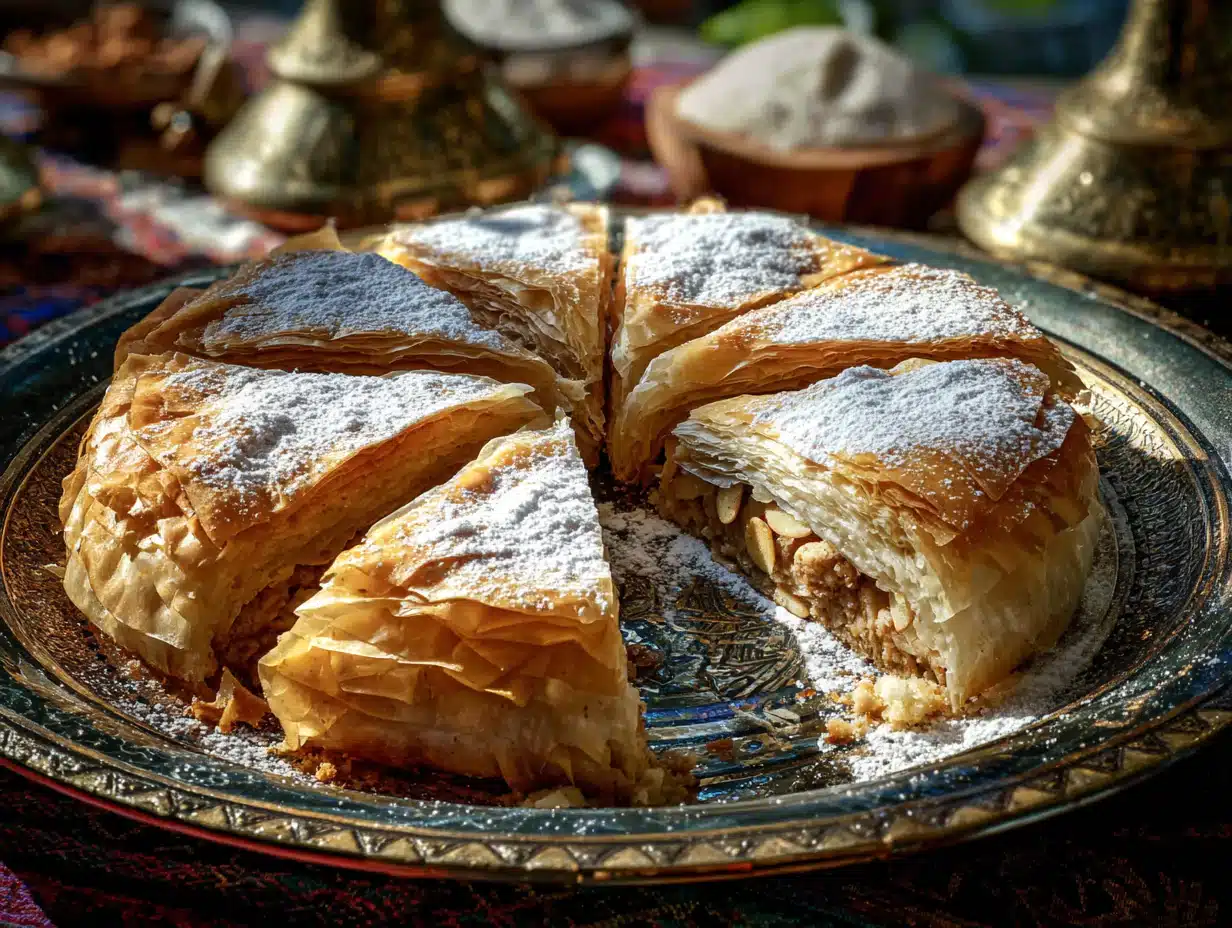
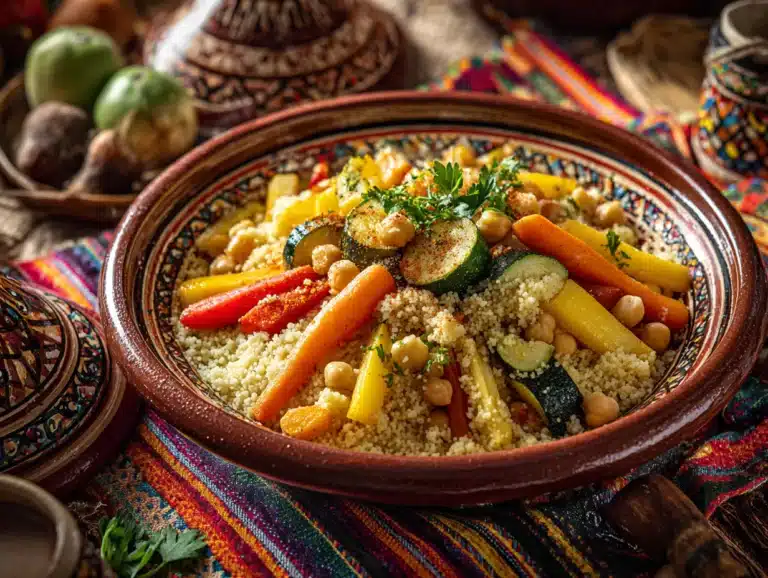
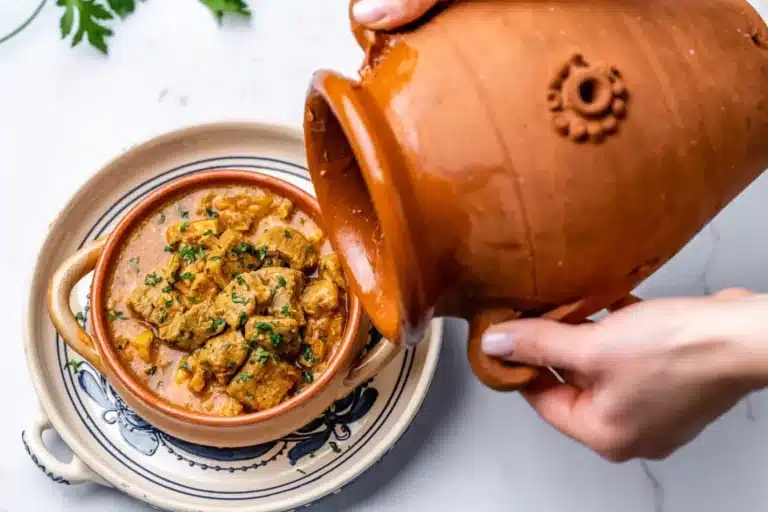
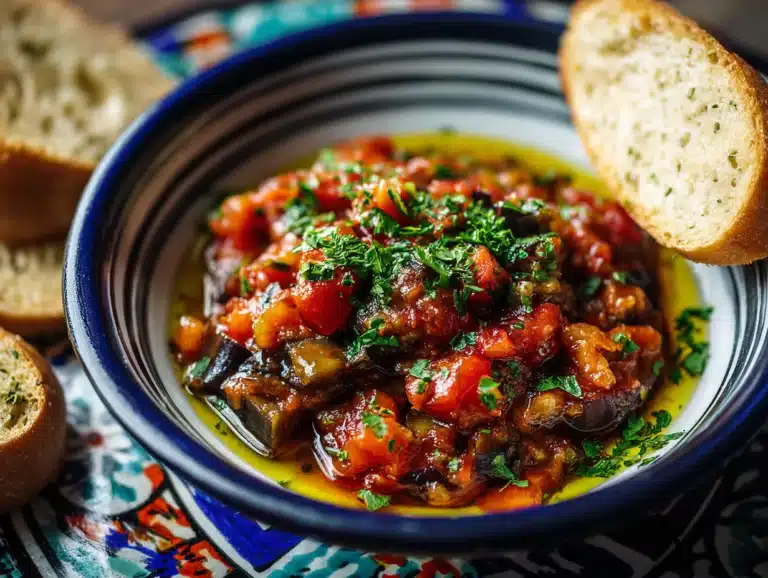
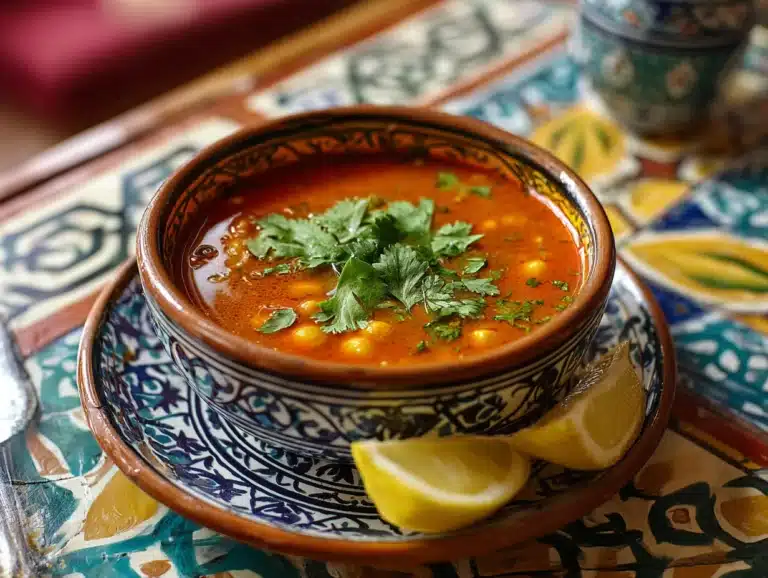
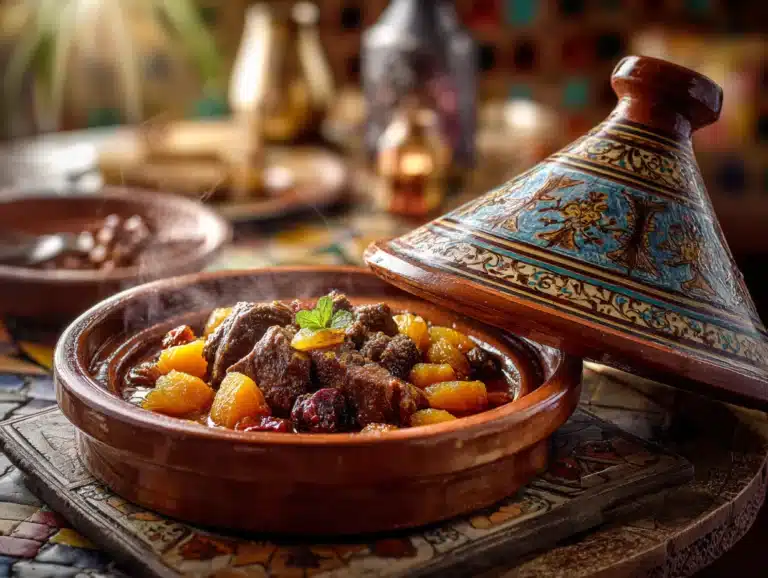
My Favorite Moroccan Dishe